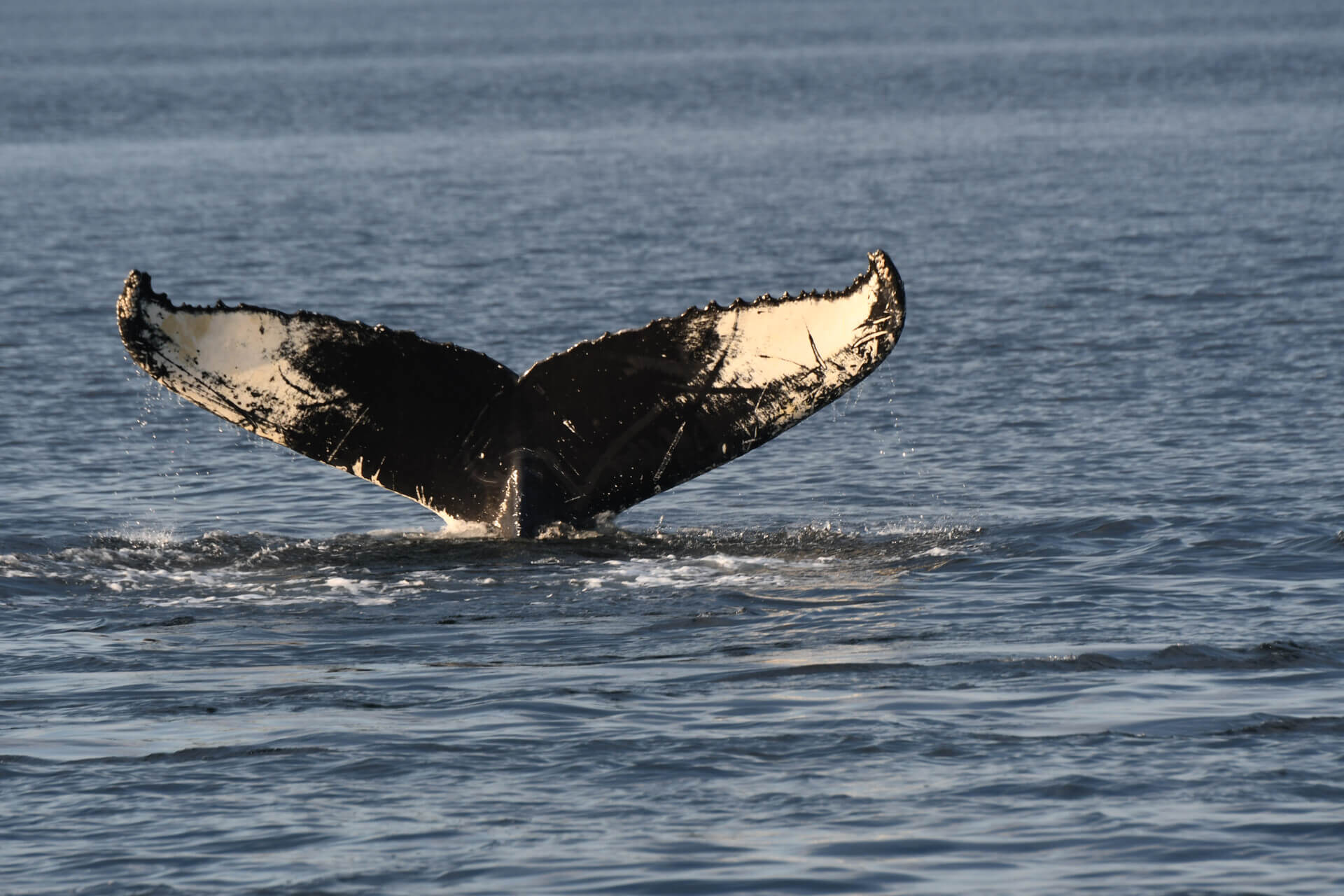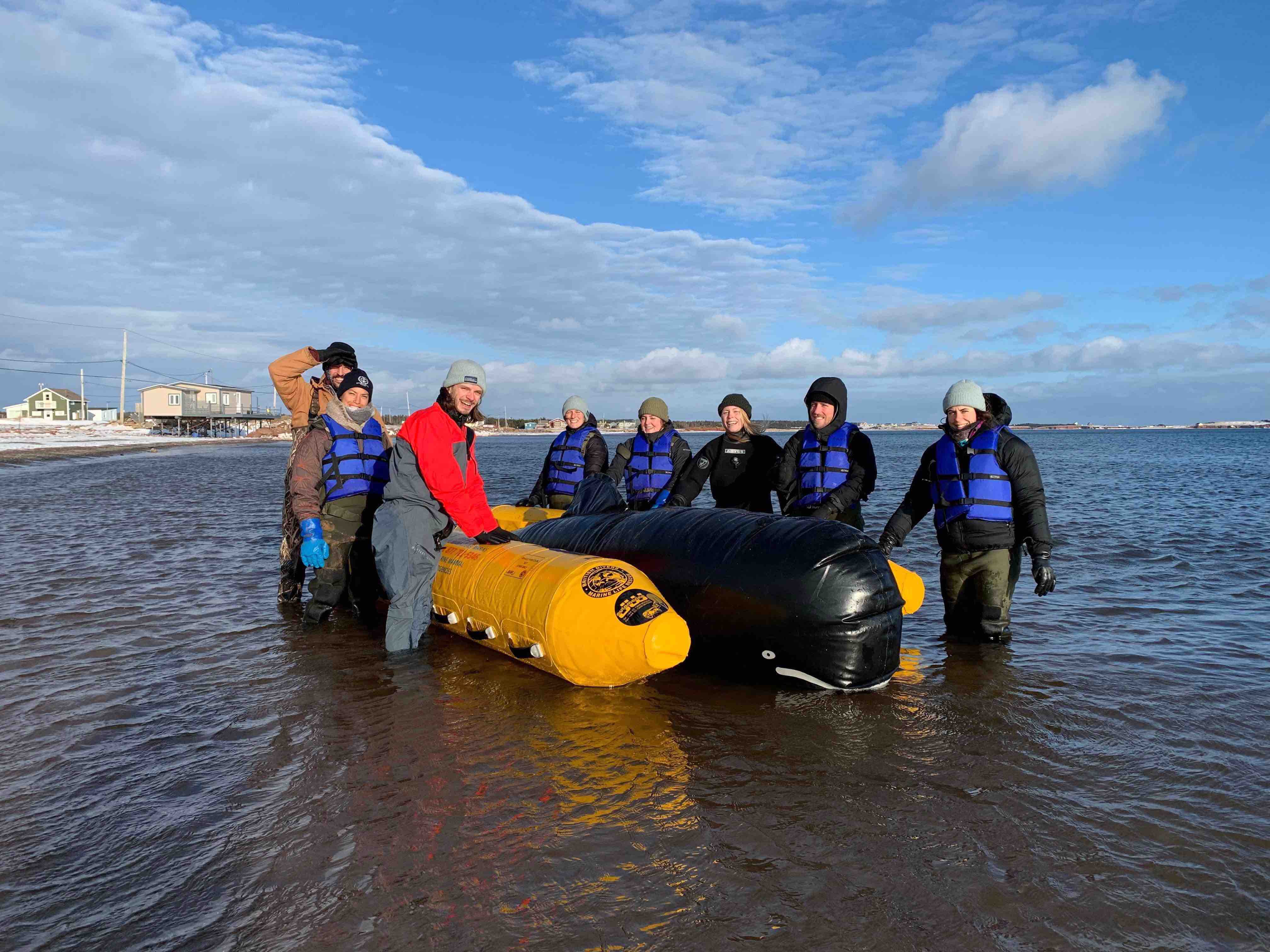The 2016 season adds to the spate of St. Lawrence beluga mortalities: 14 carcasses were recovered and examined. It’s not the numbers, but the make-up of the mortalities that worries scientists. This year, there were 8 adults and 6 young, namely 4 newborns and 2 very young animals whose age will have to be specified by analyzing their teeth this winter, but the size of which suggests that they are newborns or first-year calves. Of the adults, 7 females were found, including a young lactating female who had given birth last year and another who had calved two or three weeks earlier, judging by the condition of her uterus.
A grim picture
Since 1983, sustained efforts have been made to monitor beluga mortality thanks to an extensive network of collaborators. At a conference in Tadoussac last August, pathologist Dr. Stéphane Lair from the Université de Montréal’s faculty of veterinary medicine (FMV) presented an overview of 514 documented mortalities, including 319 necropsies completed in the laboratory.

While in the early 2000s, there was concern about the prevalence of cancer in adults – up to 27% of mortalities were caused by this disease, especially in the digestive system – since 2010, it is the increased mortality of newborns and females that are pregnant or that have just calved that is alarming to researchers.
According to Dr. Lair, many of these deaths are related to complications that arise around birth. Either the female is too weak to give birth or provide care for her young, or the calf is too weak to extricate itself or to survive in the days following birth. He also stresses that a disturbance at the time of calving could have the same effect and lead to the same consequences.
Diverse assumptions have been put forth by the scientific community to explain the mortality occurrences. It’s impossible for now to pinpoint a single cause. Potential issues include disturbance, the growing presence of PBDEs in the environment, changing environmental conditions such as a significant fluctuation in the herring stocks that belugas prey on, and sub-optimal ice conditions for the year-round residents that require specific conditions in the winter.
An endangered population

Last September, the Canadian government officially announced a change in the status of the belugas of the St. Lawrence Estuary from “threatened” to “endangered.” Moreover, earlier this month, as part of Rendez-vous Saint-Laurent 2016, Véronique Lesage, a researcher from the Maurice Lamontagne Institute, recalled the disturbing findings of her research on the beluga population: the most recent population survey reported fewer than 900 whales and the population is declining by an average of 1% per year. With regard to the change in status, Robert Michaud, president of the Group for Research and Education on Marine Mammals (GREMM), explains that in concrete terms, the level of the protection will not be raised and that the beluga was, as a threatened species, well protected under current laws. However, he believes that, politically, recognizing that the beluga situation has deteriorated is a step in the right direction.
Will the belugas disappear? Why is the population not recovering? These questions were recently addressed to Robert Michaud and Stéphane Lair; yesterday; yesterday Agence Science-Presse published a text entitled “Béluga en péril” with online interviews conducted with these two beluga experts.
To learn more:
On Whales Online:
St. Lawrence Belugas Declining
Are belugas suffering from PAHs?
Is the accumulation of flame retardants in St. Lawrence belugas cause for concern?





